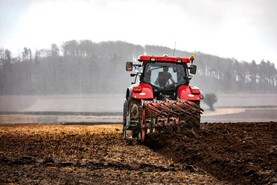The Health and Safety Authority (HSA) recorded fewer farm fatalities in 2021 than in any other year the authority has reported on in the past 10 years.
The equivalent farm fatality figure stood at 20 in both 2019 and 2020.
Of the 10 fatalities which occurred on farms, three concerned the loss of control of a vehicle, two involved the loss of control of an animal, two were caused by falling from height and two involved an object falling from height.
More fatalities
However, there were still more farming, forestry and fishing workplaces fatalities than there were in any other reporting category. Data on farming, forestry and fishing workplaces are combined in some aspects of the HSA’s reporting.
A total of 11 people lost their lives in a farm, forestry or fishing workplace in 2021, according to the HSA’s report.
These fatalities represented 29% of the 38 fatalities in total reported across all sectors of the economy.
Almost three-quarters of those who suffered a fatal safety incident in farm, forestry or fishing workplaces - some eight people - were self-employed, while two were family workers and another one was an employee.
Five of the sector’s victims were aged 65 years or older. One was aged 17 or younger.
Tractors, quads and loading shovels were involved in a combined 37% of all fatal incidents reported to have involved a vehicle in the workplace.
More progress needed
Chief executive of the HSA Dr Sharon McGuinness welcomed the fact that, overall, the number of workplace fatalities is the lowest on record, but reiterated the need for more progress to be made on reducing the number of safety incidents and fatalities at work.
The safety agency’s chief stated that all workplace fatalities are both “foreseeable and preventable”.
“Much progress has been made, but there is still a lot of work to be done,” commented McGuinness.
“There have been improvements, but, unfortunately, the farming and construction sectors are still over-represented in our fatality figures, accounting for half of all work-related fatalities between them. Both sectors will continue to be key priorities for us.”
Safety week
Monday was the beginning of the European week for safety and health at work, with the week putting a special focus on musculoskeletal disorders, which are particularly common regarding the back and upper limbs.
Musculoskeletal disorders are the most common work-related health problem in Europe, being one of the leading causes of work-related disability, sick leave and early retirement.
The HSA stated that ergonomic design - making tasks more user-friendly and less likely to cause harm when being carried out - is essential for employers setting out work activities.
“Good ergonomic interventions will reduce the adverse health effects of musculoskeletal disorders on workers and can positively impact their ability to carry out the work activity effectively,” said its senior ergonomist Frank Power.
“In order to make sure that work activities have been designed and planned to minimise the risk of injury, it is essential that ergonomic risk factors are identified and managed through the risk assessment process to avoid or reduce the risk of injury.”






 This is a subscriber-only article
This is a subscriber-only article










SHARING OPTIONS: